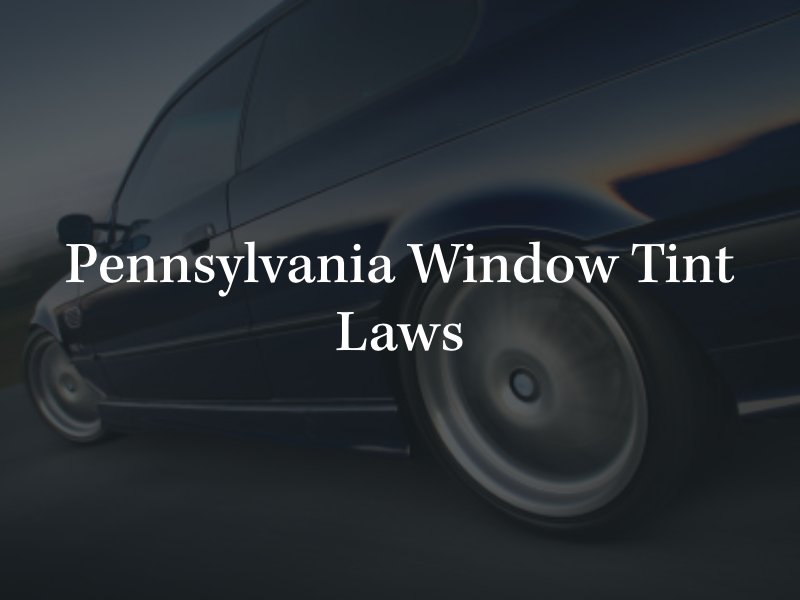Professional window tinting can help offer protection for a vehicle’s interior and comfort for drivers and passengers. However, there are laws in Pennsylvania that regulate how dark window tint can be. Failure to understand and follow these laws could result in law enforcement officials writing you a citation that results in fines. Here, we want to examine current Pennsylvania window tint laws as well as the consequences associated with failing to follow these laws.
Window Tint Darkness Allowed in Pennsylvania
The light that is allowed to pass through car windows is referred to as visible light transmission (VLT). The percentage of light allowed through the glass of a vehicle in Pennsylvania is fairly specific, but it differs for sedans and other types of vehicles on the roadway.
- Tint darkness permitted for sedans:
- Front windshield – Must allow more than 70% of light in. For the top three inches of the windsheld, any level of darkness is permitted.
- Front side windows – Tinting must permit more than 70% of light into the vehicle.
- Back side windows – Tinting must permit more than 70% of light into the vehicle.
- Rear window – Tinting must permit more than 70% of light into the vehicle.
- Tint darkness permitted for SUV’s or vans:
- Front windshield – Must allow more than 70% of light in. For the top three inches of the windsheld, any level of darkness is permitted.
- Front side windows – Tinting must permit more than 70% of light into the vehicle.
- Back side windows – Tinting must permit more than 70% of light into the vehicle.
- Rear window – Tinting must permit more than 70% of light into the vehicle.
If the back windshield is tinted at 70%, then the vehicle must have dual side mirrors and place.
A note on window tint percentages- the percentages discussed here represent the total amount of light allowed to transmit through the tent. For example, if the light transmittance is notated at 70%, this means that 70% of the light that contacts the window tint must be allowed to pass through.
There are some very minor differences concerning allowable window tint with vehicles manufactured before 1998, but the differences are not significant.
There are some medical exemptions available for the use of coloreless window tinting that filters incoming UV light. Individuals can apply for a medical exemption or ask questions about exemptions by contacting the Pennsylvania DOT’s Medical Unit at (717) 787-9662.
Window Tint Reflection Allowed in Pennsylvania
Window tint can also reflect incoming light, and this is good to help reduce the heat inside the vehicle and reduce glare for the driver and passengers. Pennsylvania law does allow for window tint to reflect a certain amount of light, but there are limits. For sedans, SUVs, and vans, neither the front side windows or the rear side windows can have mirrored or metallic tint.
Pennsylvania Window Tint Penalties
In the Commonwealth of Pennsylvania, individuals who are stopped by law enforcement officials could receive a violation if their window tint is not legal. The penalty for violating Pennsylvania window tint laws is a $110 ticket. Police can pull a vehicle over if they suspect the vehicle window tint is not lawful. If you were in an accident with a car with illegally tinted windows, contact a Philadelphia car accident attorney to see how this can help your case.
